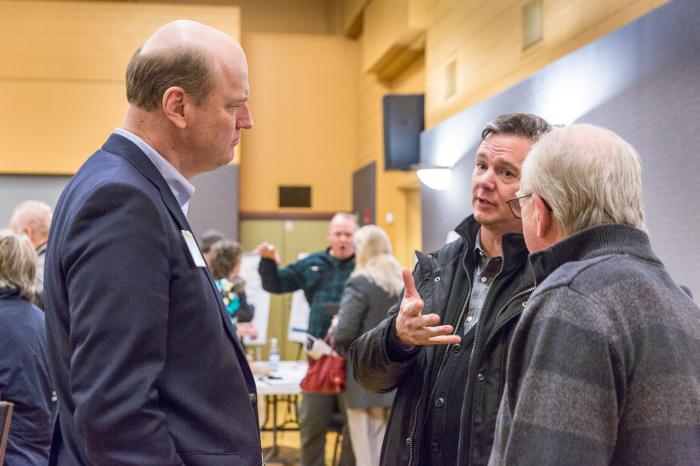By Gwen Davis
It has begun: the Port of Seattle started cutting down trees. Nearly 3,000 trees will be removed from SeaTac and surrounding areas by 2018.
During this first phase of the project, the Port will cut trees on Port of Seattle property only. It will last until March 1. Replanting efforts — made up of dwarf tree specifies and shrubs — will begin shortly thereafter.
The tree-cutting is part of the Port’s “Flight Corridor Safety Program”, which is to ensure that planes land safely. The Port says that if the trees are not removed, the Port could be fined by the Federal Aviation Administration (FAA), and the airport can be shutdown.
On Wednesday evening, the Port of Seattle hosted another open house at SeaTac Community Center to inform residents about current and future plans. About 85 people attended. As in previous open houses, booths were set up throughout the facility, featuring large diagrams and charts. Port staffers manned each station to answer people’s questions.
The Port also launched an online version of the open house.
Visit: http://seasafecorridor.infocommunity.org/ and provide your input.
Identical to the February 1 open house, the online version seeks public input specifically on:
Removal and replanting approaches for Port properties near South 200th Street
The Port’s Airport Communities Ecology Fund to invest in environmental projects and programs in SeaTac, Burien and Des Moines
To inform the next steps prior to Port of Seattle Commission action, please provide your input by February 12. However, the online open house will continue and comments will be accepted throughout the life of the program.
“There have been tree cuts already, west of the third runway,” said Perry Cooper, with the Port’s media relations team. “At this open house we’re asking folks for some of their ideas and thoughts.”
However, over the past several months, the public has been angry about the plans, and some have claimed that these types of open houses were more like stunts to make it seem that the Port was involving the community and taking in feedback, when the Port actually had no such intent.
“How can the Port cut down 3,000 trees when 50 people got up at the last commission meeting, and 49 spoke against it,” said Michael Oxman, a resident of Arbor Heights and environmental advocate. “I put down my email address, but I think they are not planning on getting back to me — they are collecting emails for brownie points. They’re trying to say, ‘look at all these people who are interested in the project!’ But we’re not interested in it. We’re interested in stopping it. This is my land, and these are the community’s trees.”
Furthermore, the Port didn’t conduct an environmental impact study (EIS) for the first phase, which angered many. This past fall, the City of SeaTac filed an appeal, demanding that the Port conduct an EIS, but the litigation got nowhere.
City of Burien Councilmember, Debi Wagner told the Times that her constituents call the tree cutting a “massacre”.
“People are sued for millions of dollars when 100 trees are cut in West Seattle, but no one does anything when 3,000 trees are cut in our neighborhood,” she said.
The environmental impacts will be staggering.
“The planes emit about 60 tons a year of C02 that won’t be absorbed,” she sated.
Wagner said that this is not the first time the Port put profit over people.
“When the airport built a third runway, they planted new trees along 154th, but they gradually died,” she said. “Do they know these new plantings will work? Looks like they may not, if history tells us anything.”
